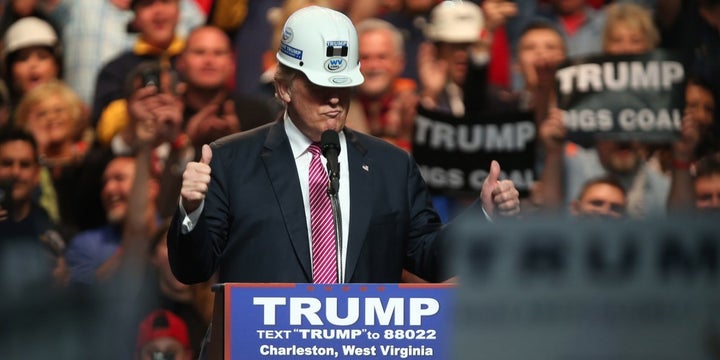
Allan H. Mogensen, the father of business efficiency coined the phrase, “Work Smarter, Not Harder.” As with all great business innovation, it takes the government a while to catch up.
President Donald J. Trump recently announced that his son-in-law, Jared Kushner, would lead a new White House Office of American Innovation.
This new office will be charged with performing a SWOT analysis designed to attack critical economic and social issues for which solutions have been elusive during past administrations. There are a bevy of campaign promises that the Trump Administration must keep, among them are running the country more like a business through simplifying the tax code, investing in our crumbling infrastructure and promoting domestic job growth.
Simplify the Federal Tax Code
President Trump during the campaign echoed the calls of economists who for years have said the federal tax code is too complicated. In 2010, President Obama authorized the bipartisan National Commission on Fiscal Responsibility and Reform, which released a report urging Congress to transform the tax code to be fair and easy to understand by creating lower tax brackets and eliminating corporate tax loopholes. While Speaker Paul Ryan and others on the commission voted against the final draft, the overall concept is worthy of a discussion. One approach that conservatives are floating is a flat tax structure, which could accomplish the overall goals. This proposal would also protect critical deductions such as mortgage interest, charitable contributions and higher education expenses – a point that conservatives and liberals can agree on.
Infrastructure Strategy
It is no secret to anyone who travels on America’s roads and bridges that our infrastructure is heavily underinvested. Critics of the new administration are quick to assume that the President is unwilling to make a major investment, which is contrary to his stated position. Given that we are less than 100 days into a Trump presidency critics should apply the same deference given to the former administration during its early days.
There are several proven cost-effective and operationally efficient strategies that the White House should consider as it charts out its $1 trillion infrastructure plan. The administration should utilize a P3 financing strategy (e.g., Public Private Partnerships) similar to the LaGuardia Gateway Partners deal to finance the redesign of New York’s LaGuardia airport. A P3 would appeal to budget-conscious conservatives and stretch Trump’s infrastructure proposal further by attracting private financing.
“It is no secret to anyone who travels on America’s roads and bridges that our infrastructure is heavily underinvested.”
The plans should include design-build for large projects, which allows governments to issue one request for proposal for an entire project. This cost saving approach has received bi-partisan support and has been used in New York to replace the famed, but crumbling Tappan Zee Bridge.
Waste to Energy
We must upgrade and expand our national sewer system. This issue is most prevalent in the Northeast where many communities date back to our nation’s founding and are still on septic systems. The administration must encourage states to transform their wastewater into a tangible asset that will power their municipal facilities, which has resulted in a reduction in operational costs and saved taxpayer dollars.
For example, through anaerobic digestion, harmful methane gas can be diverted from the atmosphere and repurposed into a source of fuel to power an onsite co-generation power plant. Further, cooking grease from restaurants have been a chronic issue for metropolitan areas including New York City and San Francisco where it clogs existing systems. San Francisco has invested in a grease receiving station to convert restaurant grease into feedstock for a biodiesel program, which has been adopted by municipalities around the country including the Great Neck Water Pollution Control District – one of the New York’s oldest treatment facilities.
Boost Regional Economic Development
The administration has been bullish on job creation and vocal about how corporations are exploiting our trade system. But in order to convince businesses to invest in America, Mr. Kushner et al. will need to identify how best to utilize the strong economic development assets found within the states.
The Trump Administration should transform the Economic Development Administration (“EDA”) and advance a new program titled CARES (i.e., Creation, Attraction, Retention, Expansion and Start-up). Under this effort, the EDA would work with states by region, to harness their collective assets and market those to prospective businesses. This approach would reduce competition among states and act as a disincentive for businesses that frequently seek to move jobs from one state to another in order to obtain additional tax incentives.
Additionally, the EDA would offer competitive grants to the states to boost their existing workforce programs. The caveat will be that the programs must have a quantifiable Return on Investment (“ROI”) and do not compete with their regional counterparts.
The fund would be financed in part, by repatriating the more than $2.5 trillion in offshore profits made by U.S. corporations, which are currently sitting in offshore accounts. Companies could bring those dollars back at an 8.5 percent corporate tax rate versus the current 35 percent. At least 3 percent of those taxable earnings would flow into the CARES fund. This would create a direct link to job creation, which would alleviate a point of contention during the last time Congress passed a similar law in 2004.
Further, the innovation group should measure the effectiveness of business programs across all agencies, including those at the Small Business Administration, the Department of Housing and Urban Development and the Department of Energy. There are a plethora of incentive and loan programs that may be redundant, making them prime candidates for consolidation to streamline administrative functions and ultimately increase taxpayer ROI.
Just as Morgy preached working smart, all of Congress must work with the President to solve these critical issues. If not, Americans will express their views at the ballot box next year.
Anthony Figliola is an economic development expert and co-author of “Patronage, Waste and Favoritism – A Dark History of Constitutional Conventions.”
